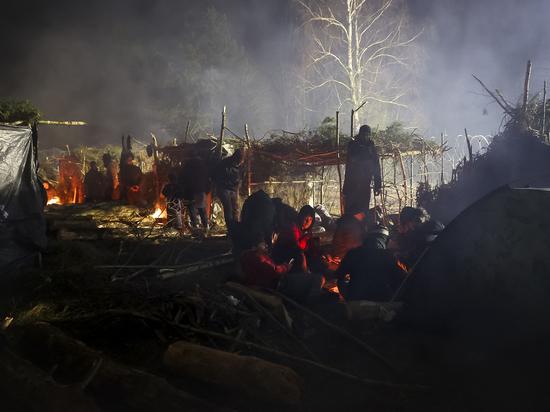Lasers deactivate special optics
Tensions remain at the Polish-Belarus border. Thousands of migrants are waiting for permission to join the European Union and live in temporary camps near the border fence. Local media report that clashes between migrants and security forces continue at the border every night. On the Belarusian side, lasers and light installations are used against Polish border guards to deactivate video equipment.

Photo: AP
Several thousand people continue to besiege the Polish border in the hope of getting into the territory of the European Union. Migrants, most of whom are natives of Iraq and other Middle Eastern countries, arrived at the border in October and have been in regular contact with Polish security forces since then. According to the Polish authorities, the migrants are receiving help from the Belarusian security forces. According to the official position of the European Union, Minsk uses the “migration crisis” as a method of political coercion.
As previously reported by the Ministry of Culture, some migrants stated that the Belarusian side had provided them with tools to break through the Polish fences. And on Friday, November 12, Polish border guards reported that they were constantly exposed to the laser from the Belarusian side.
Later, footage of the Polish media in the border area appeared on the Internet. They filmed a real “light show”, allegedly staged from the Belarusian side of the border. Flashing lights and lasers are aimed at Polish security forces, which officials say may blind the border guards.
Lasers were first used by protesters as a means of fighting law enforcement during the Hong Kong protests in the summer of 2019. Commercially available lasers have been shown to burn plastic, seriously damage the human eye and destroy police camera optics. Subsequently, this “weapon” was adopted not only by demonstrators, but also by police structures around the world.
According to the English classification, devices of this kind are called “controlled energy weapons”. Some light-shock laser devices have the ability to temporarily deprive a person of sight, and some can lead to complete blindness.
There is no exact data on who uses lasers from the Belarusian border. All that is known is that the Belarusian border guards are armed with similar devices made in China.
According to military expert Alexei Valjuzhenich MK, the “light show” of Belarusian border guards can be used as a cover for groups of migrants trying to cross the border.
– Not so long ago, an incident occurred when a Chinese destroyer irradiated an American reconnaissance aircraft. In general, the Chinese are known for using lasers on military equipment that are designed to blind the enemy. For example, the anti-tank complex operator. Figuratively speaking, a person looks into an optical sight, the laser hits the sight, and the result is that one person blinds one eye. Such weapons are prohibited by a number of international conventions. But lower power lasers are quite used by police and military structures around the world. It seems to me that the Belarusians will not use anything deadly against the Polish border guards. Rather – standard police means. But a strange precedent, of course.
– At least play on your nerves, intimidate, disorient. Maybe they're hiding some manipulations that are taking place on their territory. Or maybe they cover up migrants' attempts to break through to the fence again and damage it. It is still being tested by demonstrators in Hong Kong. When the police started moving on them, they hit them in the eye with lasers. Regular indicators. As a result, the police could not act in full force, so to speak, and withdrew. Migrants are unlikely to have such facilities, so it is most likely the equipment of the Belarusian security forces. Maybe it was issued to one of these comrades at the border. To say if anything happens: we're not in business here. And yet – such a light show negates the work of video cameras. They cannot properly record events in the border zone and consequently these shots cannot be used in the media.

